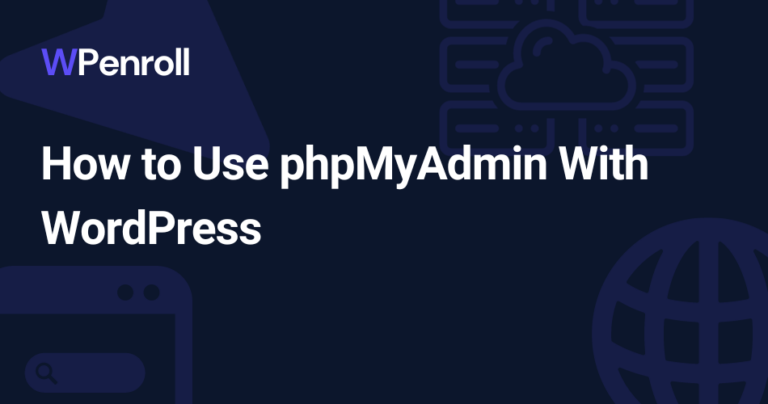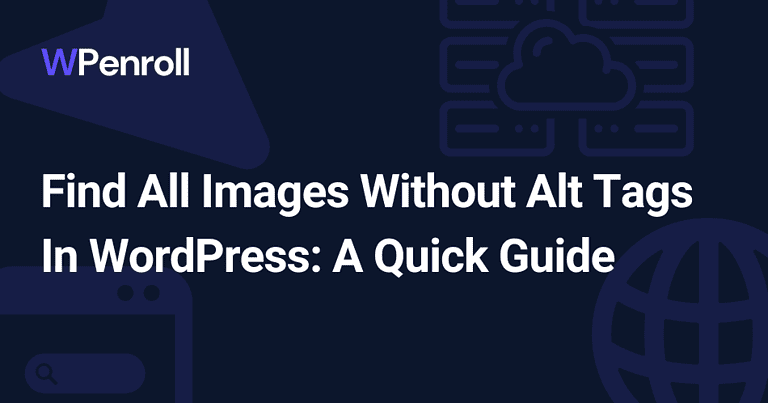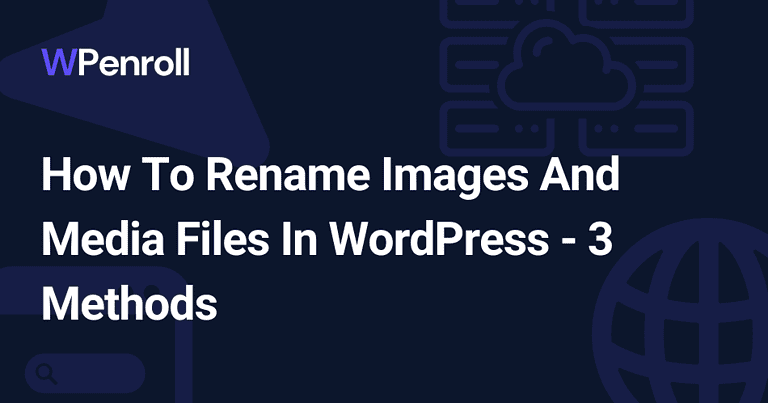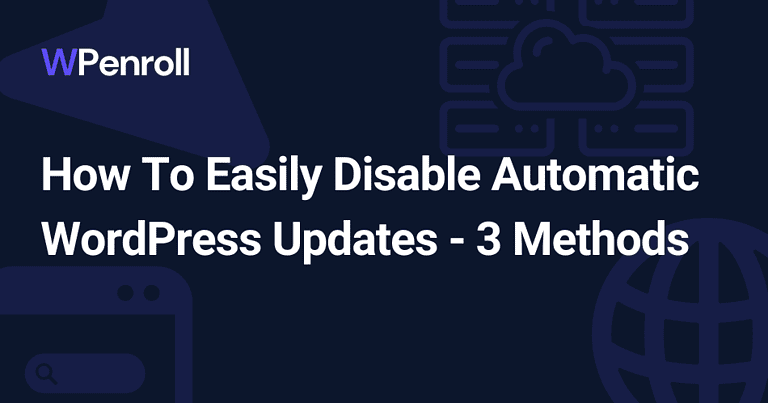9 Methods To Monetise Your WordPress Website
Creating a successful WordPress website takes time and effort, so it’s only natural to want to turn that investment into revenue.
Monetising your WordPress website can seem daunting, but generating income from your content, products, or services is possible with the right approach.
Table of Contents
Key takeaways
In this article, we will explore various strategies for monetising your WordPress site so that you can find the best fit for your needs.
- Understand your audience and the value your website offers visitors. This could be through informative content, unique products, or a highly specialised service.
- With a clear understanding of your audience’s needs and how your website meets them, you can decide which monetisation methods will align with your goals while enhancing the user experience.
- As you embark on the journey of monetising your WordPress site, it’s essential to remember that patience and persistence are key.
- Some monetisation methods may produce results faster than others; it’s critical to approach this process with a long-term mindset and be willing to experiment to determine what works best for your specific circumstances.
Monetisation Strategies
In this section, we’ll explore different monetisation strategies for your WordPress website. Choosing the most suitable methods for your audience and content is essential.
Affiliate Marketing
Affiliate marketing is a popular way to monetise your site. You can promote products or services from various affiliate programmes, such as Amazon Associates or Commission Junction, and earn a commission when users purchase through your referral links.
Be sure to recommend relevant and valuable products to your audience. It’s crucial for building trust and credibility.
I use affiliate marketing as one of my tactics to create a passive income. But being an affiliate marketer requires you to step up to your game and build a trustable brand.
You will fail if you promote any physical products or premium plugins to earn an affiliate commission without due diligence.
What I like about affiliate marketing is that you can keep your website nice and tidy without having to install Google Adsense to display ads on your website. It’s one of the more subtle monetization methods to use affiliate links.
To get started, you need to find an affiliate program that fits your niche by simply searching “[niche] affiliate program” or “[product] affiliate program”. And then, you can start making a living with affiliate links.
Once you get into affiliate marketing, you will notice how difficult it is to keep track of all your affiliate programs and affiliate sales. To solve this, I recommend you sign up for Lasso, which is free up to $1000 monthly revenue.
Display Ads and Pay-Per-Click

Display ads and pay-per-click (PPC) advertising are other standard options for generating revenue.
Google AdSense is a popular choice for both display ads and PPC. Once you sign up, you’ll have to go through an approval process. But when you’re approved and place the ad code snippet on your website, relevant ads will appear automatically.
Before you dive into Google Adsense, you need to get many articles on your website. The more categories you have, the more articles. In general, it’s a good idea to have at least 10 articles per category before applying for Google Adsense.
Pro tip: Google Adsense is an advertising network that wants to maximise the revenue for themselves, not for you. So if you sign up for Ezoic, you get many benefits where you will increase your revenue and earn more than if you just used Google Adsense.
You can get started with Ezoic even if you have less than 10.000 pageviews per month, and once you grow, you might look at ad programs like Mediavine and Raptive. These require 50.000 and 100.000 page views per month, though.
You can earn money based on the number of impressions, clicks, or conversions generated. Display ads can also be sold directly to advertisers if you prefer more control over the brands appearing on your site.
Sponsored Content
Sponsored content can also help you earn income from your WordPress website.
Companies may pay you to create articles or reviews about their products or services, which should align with your site’s theme and audience. Make sure to disclose the sponsored nature of the content, as transparency is vital for your credibility and audience trust.
You will most likely not achieve this if your website is new or you don’t have any authority in your niche, so don’t pursue this unless you have a high domain rating or are an authoritative person in your niche.
I’ve done paid videos on my YouTube channel, which included an article, and the price varies everywhere from $300 to $1000, depending on your reach.
Paid Newsletter
Another way to monetise your site is by creating a premium or paid newsletter. If you provide valuable, high-quality content to your audience through regular updates, subscribers may be willing to pay a subscription fee for access.
This can create a steady revenue stream, especially if you have a large and engaged audience.
To get started with a paid newsletter, I recommend you sign up for Substack, where you can grow your subscriber base through Substack notes.
And then use your blog content to grow your newsletter as well. Adding small nudges, popups or slide-ins in your blog content where people can sign up for your newsletter is a great way to grow your newsletter.
Pro tip: Add your newsletter sign-up form right after an important tip or valuable information, or give something away for free in exchange for your email address.
Here is how I do it on WPenroll. 👇
[cboxarea id=”cbox-DZ7YzH84qT48YAf1″]
Overall, experimenting with combining these monetisation strategies will help you find the most effective ways to generate revenue.
Membership and Subscription Models
Now this step requires a more thorough strategy and thinking, and it’s not just adding affiliate links or ads to your blog posts.
Adding a membership plugin or subscription plan as content creators requires you to devise a strategy to utilise your original content to grow your membership base.
Let’s get into it.
Building a Membership Site
Creating a membership site on your WordPress website can serve as an effective way to monetise it.
Memberships provide a steady stream of recurring income through subscriptions, ensuring a consistent cash flow for your business.
To set up a membership site, you must install a membership plugin, such as ARMember or Ultimate Membership Pro, and configure your membership levels based on the access and benefits you want to offer.
If you want a full comparison list of product reviews focused on free membership plugins, then I’ve written an article about it here.
Creating Premium Content
You don’t need premium plugins initially, and you can easily use a free membership plugin. However, once you start growing, you might want to look into premium plugins, as they offer more flexibility and feature to help you grow even more.
With a membership plugin, you can offer premium content as another approach to monetising your WordPress website.
By providing exclusive content to subscribed members, you can encourage more users to sign up for your membership plans. This can include articles, videos, webinars, and other forms of content that would appeal to your target audience.
You can use plugins like the Payments and Premium Content blocks to create and manage access to your exclusive content.
Set up a subscription service and make it run on auto-pilot. This is a popular option as a business model to earn extra on your more premium content.
With WordPress as your blogging platform, you can easily create a source of income with your successful blog.
Implementing a Paywall
The last thing you need to do once you’ve installed a membership plugin and created premium content is to set up a paywall. A paywall is a fantastic way to generate potential customers.
This you can easily do with any membership plugin mentioned in the list.
It’s possible to create a paywall, no matter your type of content.
Some of the more popular ways of doing it are by linking to interesting blog posts where potential customers will be met with a message that they have to pay to read the content or watch it if it’s videos.
Another way is to give them a sneak peek, just the first 2-4 paragraphs where they get an idea of what type of content it is, and then you hook them with a paywall.
You can either charge your potential customers a one-time fee or a subscription. All membership plugins on the list offer payment features. Initially, you should offer both options and see what converts best.
But always remember your free content is the first step in your conversion funnel, so remember to balance your free and premium content.
Selling Products and Services
Again, like with membership websites, running e-commerce sites is a whole different story than a simple text website. This is taking a step even deeper into something new.
But in this section, I’ll explore how to monetise your WordPress website by selling products and services. We’ll cover creating an e-commerce store, selling digital products, and offering online courses.
Creating an E-commerce Store
Creating your store is super simple, and the most straightforward part of it is with WordPress.
To create an e-commerce store on your WordPress site, you can use the free e-commerce plugin WooCommerce. This powerful, free plugin enables you to sell products, manage shipping, collect taxes, and more, directly through your WordPress website. To get started:
- Install and activate the WooCommerce plugin.
- Configure your settings, such as payment gateways and shipping options.
- Add and categorise your products.
- Customise your online store’s appearance, ensuring it aligns with your brand and provides a user-friendly experience.
- Remember to ensure your theme is WooCommerce compliant. Otherwise, you can easily find some great themes here.
By setting up a comprehensive e-commerce store on your website, you’ll provide a seamless shopping experience for your users and increase your chances of making money from your online business.
Selling Digital Products
Now the difficult part starts, you need to sell the products you’ve chosen to sell.
Selling digital products like ebooks, software, or downloadable content on your WordPress site can be another lucrative monetisation strategy. To sell digital products, you can either:
- Integrate digital product sales into your WooCommerce store.
- Use a dedicated digital product sales plugin, such as Easy Digital Downloads.
When selling digital products, focus on providing a smooth customer experience. Ensure your users can easily access their purchases and receive excellent customer support when needed.
Adding a live chat is a great way to improve your customer support, and remember to make the experience from entering your website to purchasing as smooth and easy as possible. Remove any unnecessary steps.
Offering Online Courses
With an e-commerce plugin and store, you can also offer online courses, which you can also combine with the previous monetisation method, where you can sell it through membership plugins. It depends on your strategy.
Offering online courses or workshops can be a great way to monetise your WordPress website. You can use plugins like LearnDash or LifterLMS to create and manage your online courses. Here are some steps to get started:
- Identify your niche and develop high-quality, valuable course content.
- Choose an online course plugin and install it on your WordPress website.
- Configure your course settings, such as pricing, access levels, and enrolment policies.
- Promote your courses to attract learners and provide excellent customer support to keep them engaged.
By offering online courses, you can leverage your expertise to provide users with valuable knowledge and skills while generating a steady income stream.
By implementing these strategies, you’ll be well on your way to monetising your WordPress website by selling products and services. Remember to stay committed, keep experimenting, and always focus on providing value to your users, which will help you create a loyal audience.
Install Google Analytics as a little tip, as this will help you track your experiments.
Additional Monetisation Opportunities
Apart from the usual strategies such as affiliate links, sponsored posts, and selling merchandise, you can explore several additional opportunities to monetise your WordPress website.
I’ll briefly mention three potential options: Consulting and Freelance Writing, Creating a Podcast, and Offering Webinars and Workshops.
Consulting and Freelance Writing
If you have developed expertise in a specific field or possess strong WordPress skills, you can offer consulting services to other businesses or bloggers.
Help them set up, optimise, or manage their WordPress websites and charge a fee for your professional services.
Moreover, you can use your writing prowess to create guest blog posts or freelance articles that you can sell to other websites or blogs. This allows you to leverage your knowledge and skills to generate additional income.
This is great for your business growth and will add more attention to your WordPress website. Remember to write content for your own blog to attract search engines and show potential customers you know what you’re doing. It’s like a portfolio.
Another way is to create a page on your WordPress website where people can book you for an hour. If you’re a landing page expert, you can let people pay you $100 to roast their landing page.
If you’re an SEO expert, let people buy a specific service for a fixed amount. Maybe you give feedback on a piece of content or develop an SE strategy plan with them.
You need to be creative because there are a ton of options.
Creating a Podcast
Podcasts have become increasingly popular as they provide an easy way for people to consume content on the go. If you already have a successful blog, consider expanding your reach by starting a podcast.
I created my own Podcast a couple of years ago, and even though the different podcast platforms help you promote it, what I found to be hardest, based on my own experience, was promoting the podcast and getting people to find it.
You can create episodes related to your niche and attract a wider audience. Some ways to monetise your podcast include:
- Including sponsored ads during the episodes.
- Offering premium content through platforms like Patreon.
- Charging a subscription fee for access to exclusive episodes.
- Offer your professional services through the Podcast.
Of course, it’s not as easy as just starting to speak into a microphone and publishing your podcast. You really need to promote your podcast through your network and your engaged audience.
Creating podcast episodes is just a very small part of hosting a podcast.
Offering Webinars and Workshops
To further capitalise on your expertise, consider hosting webinars or workshops on your website. These can be live or pre-recorded events that cover different aspects of your niche or field.
You can charge attendees an access fee by offering valuable insights and information. You can offer tools such as live chats, Q&A sessions, or follow-up resource materials to make these opportunities more engaging and interactive.
You can also use your webinars or workshops to grow your audience, so all they need is to provide their email address, and then they get access where you, on the other hand, get their email address to run through your email marketing process.
By exploring these additional monetisation opportunities, you can diversify your income streams and make your WordPress website even more profitable. Remember, always focus on providing value to your audience, and success will follow.






